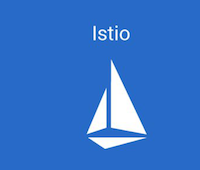As microservices-based applications become more prevalent, both the number of and complexity of their interactions increases. Up until now much of the burden of managing these complex microservices interactions has been placed on the application developer, with different or non-existent support for microservice concepts depending on language and framework.
The service mesh concept pushes this responsibility to the infrastructure, with features for traffic management, distributed tracing and observability, policy enforcement, and service/identity security, freeing the developer to focus on business value. In this hands-on session you will learn how to apply some of these features to a simple polyglot microservices application running on top of OpenShift using Istio, an open platform to connect, manage, and secure microservices.
Istio is an open platform to connect, manage, and secure microservices. Istio provides an easy way to create a network of deployed services with load balancing, service-to-service authentication, monitoring, and more, without requiring any changes in application code. OpenShift can automatically inject a special sidecar proxy throughout your environment to enable Istio management for your application. This proxy intercepts all network communication between your microservices microservices, and is configured and managed using Istio’s control plane functionality -- not your application code!
First, open a terminal and run the following commands:
cd
wget https://raw.githubusercontent.com/jamesfalkner/istio-lab-summit-2018/master/scripts/connect.shIn the browser, you had requested a lab environment. On that page, you were
assigned a GUID (a 4-digit alphanumeric string). For example, xxxx.
To connect to your provisioned lab machine, run the following command:
MAKE SURE THAT YOU SUBSTITUTE xxxx FOR THE GUID THAT YOU WERE ASSIGNED
cd
bash connect.sh openshift-xxxx.rhpds.opentlc.comMake sure you type yes to complete the SSH connection.
Once connected, your lab machine has several environment variables pre-defined,
and has Istio added to your $PATH. You can confirm this is set correctly:
echo Istio Home: $ISTIO_HOME && \
echo Istio Lab Content: $ISTIO_LAB_HOME && \
echo Istio Lab Project Name: $ISTIO_LAB_PROJECT && \
echo Path: $PATHAll of the exercises in this lab will be performed as the root system user.
First, escalate your privileges using the following sudo command:
MAKE SURE THAT YOU EXECUTE THE SUDO COMMAND EXACTLY OR YOUR ENVIRONMENT VARIABLES WILL NOT PROPAGATE CORRECTLY
sudo -E -iThen, execute the following two commands which will start the local OpenShift environment and install Istio into it:
cd $ISTIO_LAB_HOME
./scripts/start.shThe start script will then output a URL for you to visit:
--------------------
Setup complete. Open the Lab Instructions in your browser: http://istio-workshop-guides.aa.bb.cc.dd.xip.io
--------------------
This is the URL for your customized lab guide that you will use for the rest of the lab. Please open that URL in your browser and continue from there.
You can deploy the lab guides as a container image anywhere but most conveniently, you can deploy it on OpenShift Online or other OpenShift flavours:
oc new-project guides
oc new-app osevg/workshopper --name=istio-workshop \
-e CONTENT_URL_PREFIX=https://raw.githubusercontent.com/jamesfalkner/istio-lab-summit-2018/master/instructions
-e WORKSHOPS_URLS="https://raw.githubusercontent.com/jamesfalkner/istio-lab-summit-2018/master/instructions/_rhsummit18.yml" \
-e JAVA_APP=false \
-e OPENSHIFT_MASTER="http://127.0.0.1:8443" \
-e APPS_SUFFIX="apps.127.0.0.1.nip.io" \
-e ISTIO_LAB_HOSTNAME="127.0.0.1"
oc expose svc/istio-workshop
Replace OPENSHIFT_MASTER with the URL to the console of your working OpenShift
environment (e.g. http://128.0.0.1:8443), APPS_SUFFIX with your default
routing suffix (e.g. apps.127.0.0.1.nip.io), and ISTIO_LAB_HOSTNAME with
the public hostname of your machine. These variables are used to subsitute
values in the markdown content files.
The guides can then be accessed at http://istio-workshop-guides.$APPS_SUFFIX.
The lab content (.md files) will be pulled from the GitHub when users access the guides in
their browser.
Note that the workshop variables can be overriden via specifying environment
variables on the container itself e.g. the JAVA_APP env var in the above
command
You can directly run Workshopper as a docker container which is specially helpful when writing the content.
docker run -p 8080:8080 -v $(pwd):/app-data \
-e CONTENT_URL_PREFIX="file:///app-data/instructions" \
-e WORKSHOPS_URLS="file:///app-data/instructions/_rhsummit18.yml" \
-e OPENSHIFT_MASTER="foo" \
-e APPS_SUFFIX="$MY_IP.xip.io" \
-e ISTIO_LAB_HOSTNAME="MY_HOSTNAME" \
osevg/workshopper:latest
Replace OPENSHIFT_MASTER with the URL to the console of your working OpenShift
environment (e.g. http://128.0.0.1:8443), APPS_SUFFIX with your default
routing suffix (e.g. apps.127.0.0.1.nip.io), and ISTIO_LAB_HOSTNAME with
the public hostname of your machine. These variables are used to subsitute
values in the markdown content files.
Go to http://localhost:8080 on your browser to see the rendered workshop
content. You can modify the lab instructions and refresh the page to see the
latest changes.
